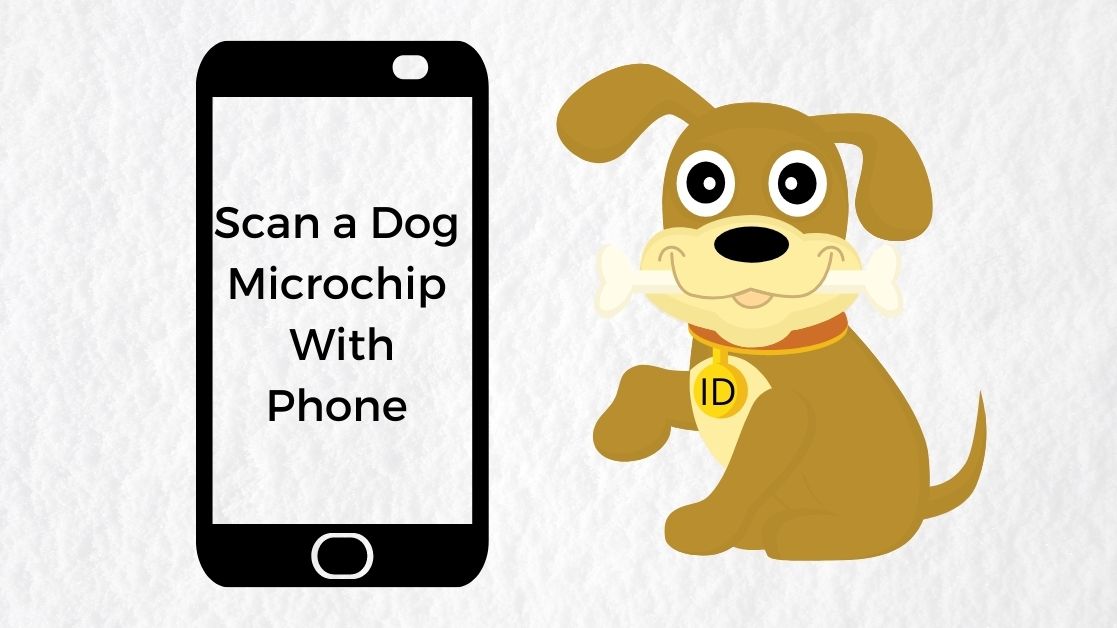A pet microchip is a contemporary chip that stores your dog's information as well as your contact information. If your pet goes missing and is discovered by someone else, the microchip can be used to contact you.
However, it's unclear whether or not you can read a Pet Microchip with NFC on your smartphone. Let's have a look.
What is the purpose of a pet microchip?
A tracking microchip is implanted in pets such as dogs and cats to allow them to be easily identified. Pet Microchips have emerged as the most excellent approach for identifying lost pets in recent years since traditional tags may be readily removed, while Microchips are extremely difficult to remove.
What is the Function of a Pet Microchip?
A Pet Microchip works based on RFID technology, with the transmitter storing the pet's and owner's information. When someone comes across a lost pet, the scanner can be used to scan the microchip and obtain information from the owner. Because these chips don't use GPS, they don't require a power source or a battery.
Is it possible for NFC to read a pet's microchip?
Before answering the question, it's necessary to understand how RFID works. RFID, or Radio Frequency Identification, is a technology that sends and receives data using low-power radio waves. It's the technology utilized in the majority of pet microchips.
NFC is another RFID-driven technology, with the primary difference being that NFC operates on a specific frequency that requires close proximity. It means that NFC can only communicate with other devices if they are within a certain distance, which is typically 4 to 10 cm.
When it comes to reading a Pet Microchip, it's only possible if the microchip is within NFC's range. However, you won't be able to do so using your smartphone in most circumstances, and you'll need a specialist RFID Reader to read data from the Pet Microchip.

Is it possible to read a pet microchip with a smartphone?
No, your smartphone won't be able to read the RFID Pet Microchip. During my study, I came across some apps that claim to be able to read RFID Pet Microchips, but they don't work, and many users have reported suspicious behavior from them. As a result, I strongly advise you to read the app reviews before installing them on your smartphone.
Is it true that vets scan microchips for free?
If you locate a missing pet and wish to find out who owns it, you can contact your local veterinarian. Many veterinary clinics have RFID scanners that can be used to scan a pet's microchip and then utilize that information to track down the owner. In most situations, veterinarians will perform it for free, and you will not be charged a thing to have the microchip scanned.
How can you tell whether your dog or cat has a microchip?
It's pretty hard to detect a Microchip in a Pet with your hands; thus, you'll have to scan the microchip with an RFID Scanner. These Microchips are typically implanted between the pet's front legs, and when you scan that area, the scanner will identify it and retrieve the pet's information.
Microchip the dog; can you feel it?
You can't feel the Dog Microchip with your hands because it's really little. The only way to detect a dog's microchip is to use an RFID scanner to scan the dog.
Microchipping a pet is it painful?
So it is not a complicated procedure to implant a microchip inside a pet, and experienced veterinarians can do it with minimal discomfort to the dog.
What is the cost of implanting a Pet Microchip in a pet?
The cost of a Pet Microchip varies depending on where you reside, but the average cost is roughly $45, which includes the charge for registration in the Pet Recovery database. It's critical to scan your dog with RFID scanners before implanting a microchip because some dogs already have the Pet Microchip implanted. If you adopted your dog from a shelter, there's a good possibility it already has a Microchip.
What is the appearance of a microchip in a pet?
Microchips are tiny chips that are absolutely harmless, as their name suggests. The microchip is tiny, with a volume nearly equivalent to that of a rice grain. Furthermore, because these chips do not include a battery or other power source, they are perfectly safe for pets to use.

What's the best way to track down the owner of a pet microchip?
If you have an RFID scanner, you can use it to retrieve the pet's pertinent information, which you can then use to locate the pet's owner.
Is there a monthly charge for a Microchip?
No, a microchip does not have a monthly fee, and you will be responsible for the cost of having it installed in your pet. It'll be there for the rest of your pet's life, and you won't have to pay for it again.
Is it possible to remove a microchip from a pet?
You can technically remove a Microchip from your pet; however, most veterinarians will advise against it because it is a dangerous medical procedure. That is why most veterinarians will advise against it and will not perform it themselves.
What is the lifespan of a pet microchip?
Microchips for pets can live for years, and the average microchip has a 20-year functional life, which means it will continue to work flawlessly for the rest of your pet's life.
Conclusion
That's all there is to it, guys. You learned how to read the Microchip on your pet in this guide. I also addressed some frequently asked questions, which will help you understand why you should have a Pet Microchip installed on your pet.
Abubakr Conner brings a diverse skill set to our team, and covers everything from analysis to the culture of food and drink. He Believes: "Education is the most powerful weapon that exists to change the world." .
Leave a reply
Your email address will not be published. Required fields are marked *Recent post

How to Watch Instagram Stories without them Knowing: 6 Ways to do it



